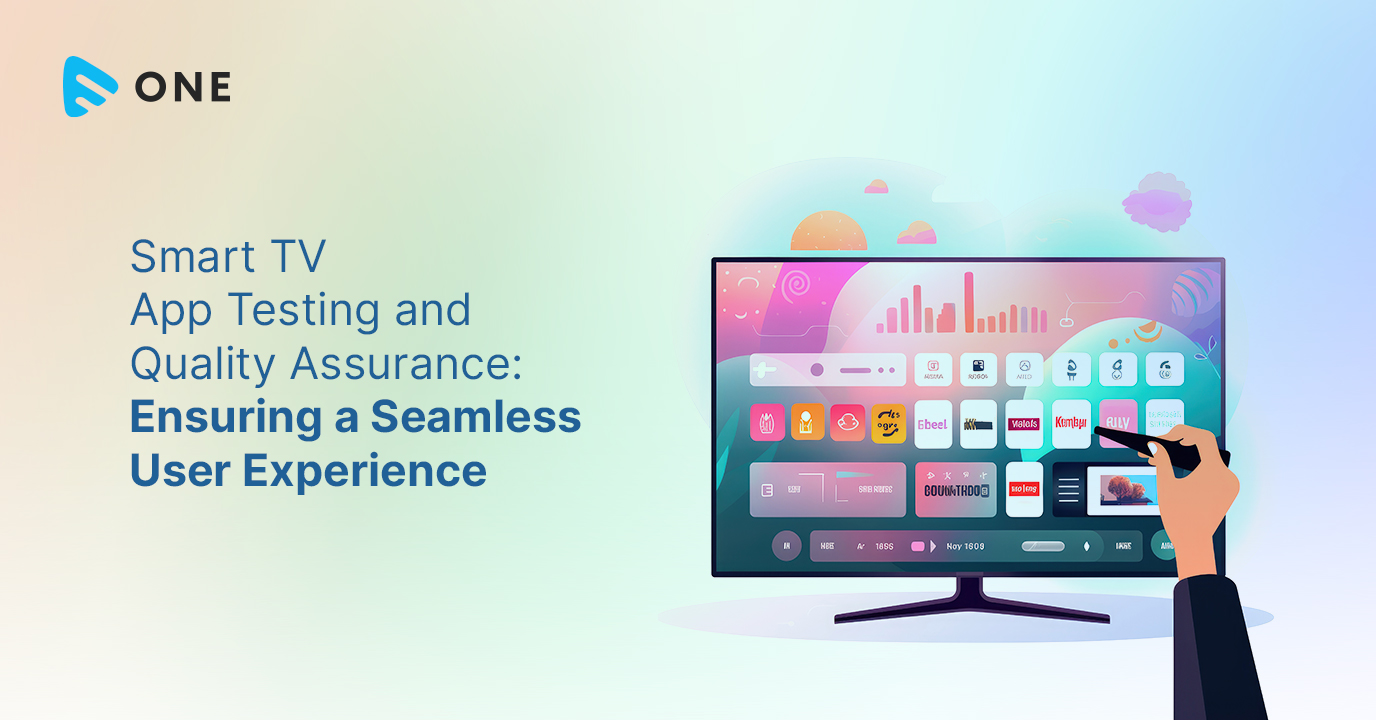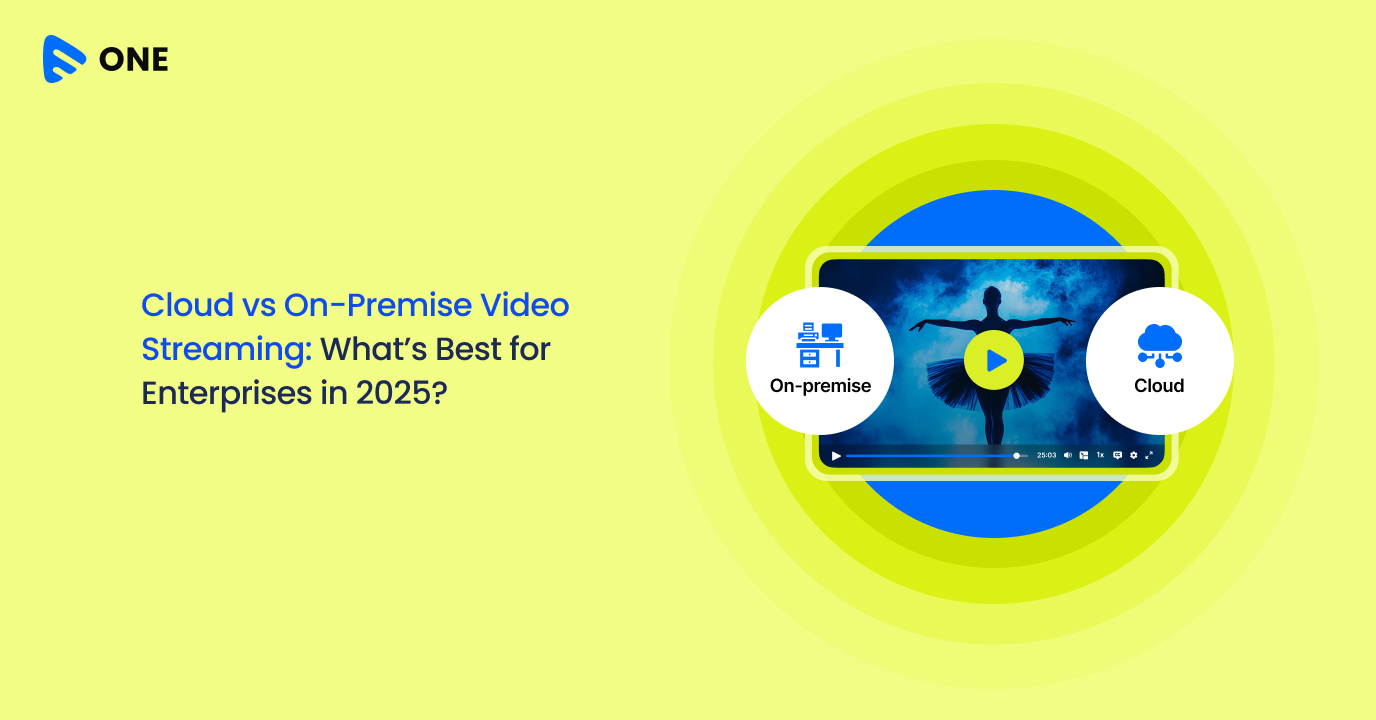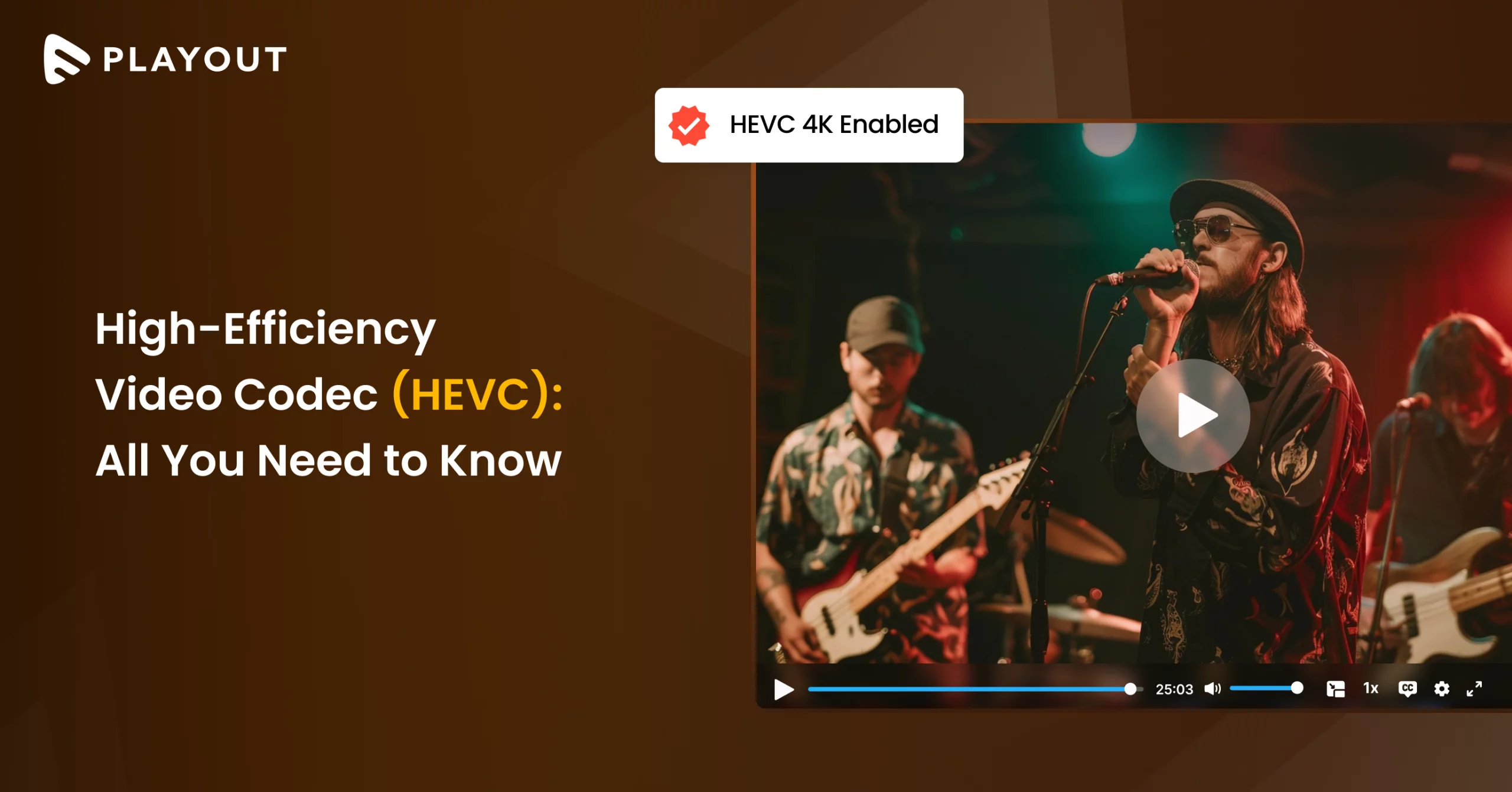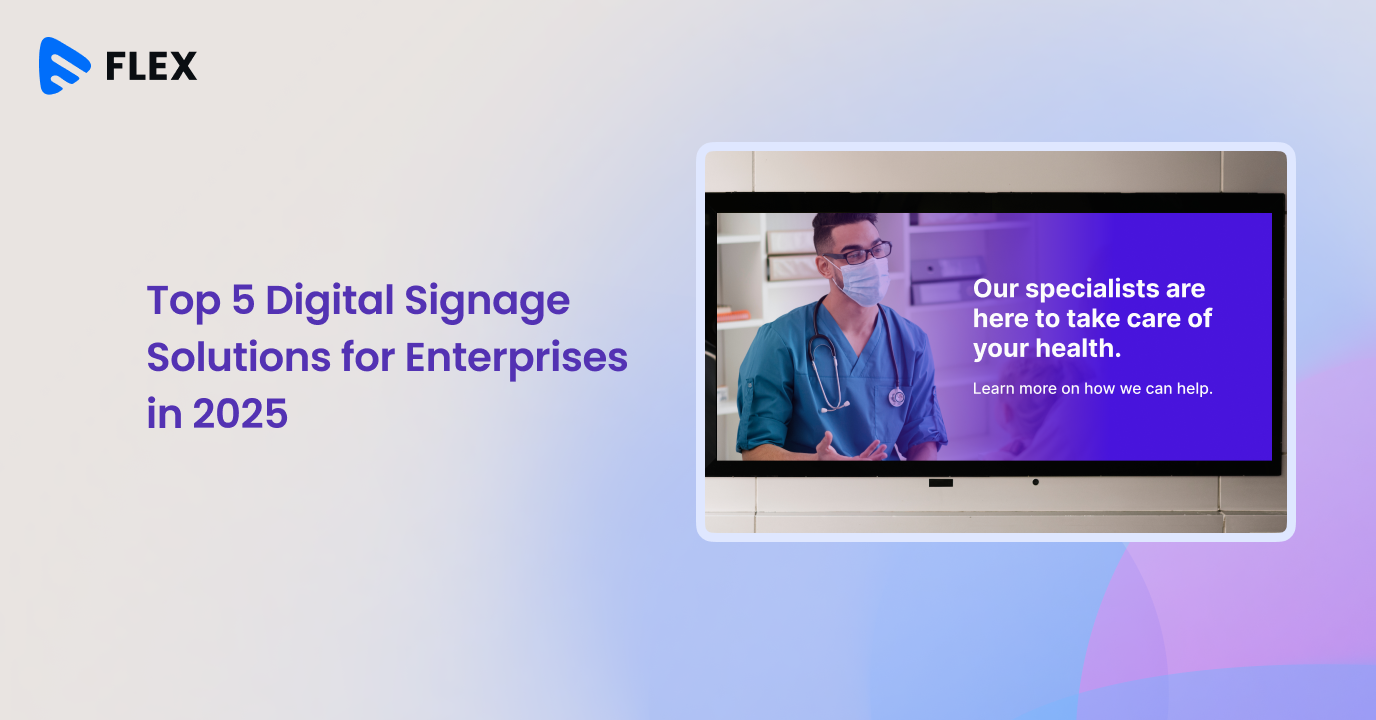Smart TV app testing and quality assurance is pivotal to improve your smart TV app performance as well as the user experience. With an audience that seeks quality, reliability, and innovation, ensuring your app functions flawlessly has never been more critical.
Your smart TV app is the gateway to a world of entertainment, information, and connectivity for your users. Whether they’re binge-watching their favorite series, exploring interactive content, or staying updated with the latest news, your app must meet and exceed their expectations
In this dynamic environment, where thousands of smart TV apps compete for users’ attention, delivering a subpar experience is simply not an option. To succeed and thrive, you must invest in rigorous Smart TV App Testing and Quality Assurance.
If you are wondering how, then read on! In this blog, we will walk you through all you need to know about it.
So, let’s get started!
What Is Smart TV App Testing and Quality Assurance?
Smart TV App Testing and Quality Assurance are systematic processes designed to ensure the functionality, performance, security, and overall quality of smart TV applications. These critical phases of app development and maintenance are essential to delivering a seamless and dependable user experience in the competitive market of smart TV technology.
Smart TV App Testing involves a comprehensive examination of the application to identify any defects, glitches, or inconsistencies that could hinder its performance. This process encompasses functional testing, where the app’s features and functionalities are rigorously assessed to ensure they work as intended.
Compatibility testing ensures the app functions seamlessly across a range of smart TV models, screen sizes, and operating systems. User interface (UI) and user experience (UX) testing aim to guarantee an intuitive and user-friendly design, while load and performance testing assess the app’s response under various usage scenarios. Additionally, security testing is crucial to identifying vulnerabilities and protecting sensitive user data.
Quality Assurance, on the other hand, is a broader approach that encompasses the entire development cycle. It involves setting and adhering to stringent standards and best practices, establishing clear processes, and continually monitoring and improving the application’s quality.
Quality Assurance is not limited to testing but also involves preventive measures, such as code reviews, documentation, and ensuring compliance with industry standards and regulations.
Smart TV App Testing and Quality Assurance work in tandem to achieve several key objectives:
- User Satisfaction: By identifying and rectifying issues before they reach the end-users, these processes ensure a bug-free and reliable application, leading to a higher level of user satisfaction.
- Market Competitiveness: In a crowded marketplace, where numerous smart TV apps vie for attention, ensuring your app functions seamlessly is crucial for staying competitive and retaining a loyal user base.
- Security: With increasing concerns about data privacy and cybersecurity, thorough testing and quality assurance processes help in fortifying the app’s security, protecting user information from potential threats.
- Cost Efficiency: Identifying and addressing issues early in the development cycle is more cost-effective than fixing them after the app’s release, saving both time and resources.
The Key Pillars of Smart TV App Testing for Better UX
1. Test Environments
Smart TV apps need to function across a diverse range of devices, operating systems, and screen sizes. Testing environments are a foundational pillar of Smart TV App Testing, ensuring your application performs consistently and reliably on various platforms.
- Device Compatibility Testing: Smart TVs come in an array of brands and models, each with its own specifications and capabilities. To provide a universal experience, your app must be compatible with as many of these devices as possible. Testing on multiple devices ensures that your app runs smoothly, adapting to different hardware and screen resolutions.
- Operating System Compatibility: Smart TVs often employ different operating systems, such as Tizen, webOS, Android TV, and others. Compatibility testing across these OS platforms guarantees that your app functions flawlessly regardless of the system it runs on.
- Input Method Testing: Smart TVs use various input methods, including remote controls, voice commands, and touchpads. Ensuring that your app responds correctly to all these input methods is vital. You need to validate that navigation, interaction, and UI controls work seamlessly with each input method.
- Network Conditions: Smart TVs connect to the internet through various network conditions, including different speeds and connectivity types. Testing your app’s performance under various network conditions ensures that it remains responsive and functional even in areas with limited internet connectivity.
2. UI/UX Evaluation
The user interface (UI) and user experience (UX) of your Smart TV app are the first points of interaction with your audience. Therefore, evaluating and optimizing these elements are equally vital in the testing process.
- UI Consistency: Consistency in design elements such as colors, fonts, and navigation across the app is crucial for providing a seamless user experience. Users should not feel disoriented when moving between different sections of the app.
- Navigation Flow: The app’s navigation flow should be intuitive and user-friendly. UI/UX testing identifies any issues related to navigation, helping to ensure that users can easily find and access the content they desire.
- Content Accessibility: Assessing the accessibility of your content is essential, particularly for users with disabilities. Ensure that your app adheres to accessibility standards, making it usable by a broader audience.
- Load Times and Responsiveness: Slow load times and unresponsive UI elements can lead to user frustration. Evaluate how quickly your app loads and responds to user interactions, aiming for a snappy and seamless experience.
- User Feedback Incorporation: Listening to user feedback and incorporating it into your app’s design and functionality is integral. Conduct usability testing to gather feedback and insights directly from your target audience. This iterative approach allows for continuous improvements based on real user experiences.
- Multilingual Support: If your app targets a global audience, multilingual support is vital. Ensure that your app’s UI and content display correctly in various languages, accommodating users from diverse linguistic backgrounds.
3. Compatibility Checks
- Device Compatibility: Smart TVs come in various models, each with its own set of hardware and software specifications. Ensuring that your app functions seamlessly across a wide range of smart TV brands and models is essential. Compatibility checks involve testing your app on different devices to guarantee it adapts to varying screen sizes, resolutions, and capabilities. This includes running tests on popular brands like Samsung, LG, Sony, and various others.
- Operating System Compatibility: Different smart TVs run on distinct operating systems, such as Tizen, webOS, Android TV, and more. It’s crucial to ensure that your app is compatible with the specific operating systems your target audience uses. This involves testing the app on different OS versions to identify any compatibility issues that might arise.
- Input Method Testing: Smart TVs offer various input methods, from remote controls and voice commands to touchpad and gesture control. Your app must be tested to ensure that it responds accurately and consistently to all these input methods.
This is essential for delivering a user-friendly and intuitive experience, regardless of how users interact with the TV.
- Network Conditions: Users may have varying internet connection speeds and types. Testing your app under different network conditions, including high-speed and low-speed internet connections, helps ensure that your app remains responsive and functional even in areas with limited connectivity.
- Accessibility Testing: Inclusivity is a fundamental aspect of modern app development. Accessibility testing ensures that your app is usable by people with disabilities. It involves verifying that the app complies with accessibility standards and guidelines, making it accessible to a broader audience.
4. Functional Testing
- Feature Testing: Functional testing assesses the core features and functionalities of your smart TV app. This process involves executing a wide range of test cases to verify that features such as video playback, content browsing, search, and navigation work as intended. It also checks for any unexpected behaviors or issues that might affect the user experience.
- Interactive Elements: Smart TV apps often feature interactive elements like buttons, menus, and forms. Functional testing scrutinizes these elements to ensure they respond accurately to user inputs, delivering a seamless and frustration-free user experience.
- Content Validation: Content is the heart of most smart TV apps. Functional testing verifies that content, whether it’s video streaming, news articles, games, or any other type of content, is displayed correctly and is accessible to users without issues like buffering, distortion, or missing elements.
- Error Handling: It’s essential that your app gracefully handles errors and exceptions, providing users with informative error messages and guiding them back to a functional state. Functional testing evaluates the app’s error handling mechanisms to ensure a positive user experience even when things go wrong.
- Security Testing: Security is paramount in app development. Functional testing checks for vulnerabilities, such as data leaks, unauthorized access, and other security issues. It’s crucial to identify and rectify these concerns to protect user data and maintain trust.
5. Performance Metrics
- Load Times: Load times are a critical aspect of user experience. Users expect apps to launch quickly and content to load without delay. Performance metrics measure how long it takes for your app to start and display content, ensuring a snappy user experience.
- Responsiveness: Responsiveness testing evaluates how quickly the app responds to user inputs. A laggy or unresponsive app can frustrate users, so it’s vital to measure and optimize response times for various actions within the app.
- Stress Testing: To assess how well your app handles heavy user loads, stress testing simulates a large number of concurrent users or requests. This is crucial to identify potential bottlenecks and issues related to scalability.
- Memory and Resource Usage: Smart TVs have limited resources. Monitoring memory and resource usage helps ensure that your app doesn’t consume excessive system resources, which could lead to crashes or slowdowns.
- Compatibility with Remote Controls: Many smart TVs are operated with remote controls, and your app should be optimized for this input method. Performance metrics should evaluate how well the app responds to remote control inputs, ensuring a seamless user experience.
- Network Performance: Network performance testing assesses how well your app performs under different network conditions, such as low bandwidth or intermittent connectivity. It’s important to ensure that your app remains usable even when the internet connection is less than ideal.

6. Security Assessment
- Data Protection: Smart TV apps often collect and process user data. Security assessment evaluates how well this data is protected from unauthorized access and breaches. It involves testing the app for vulnerabilities, data encryption, and secure data storage to prevent data leaks and maintain user privacy. Utilizing a VPN for Apple TV can enhance this protection, ensuring an additional layer of encryption and privacy for users’ data.
- Authentication and Authorization: Security testing verifies that the app’s authentication and authorization mechanisms are robust. This includes testing login processes, user account security, and ensuring that users can only access the content and features they are authorized to use.
- Secure Communication: In today’s interconnected world, apps often communicate with remote servers or cloud services. Security assessment ensures that these communications are secure, employing protocols like HTTPS to encrypt data in transit and prevent man-in-the-middle attacks.
- Vulnerability Scanning: Scanning for known vulnerabilities in third-party libraries, frameworks, and dependencies is a vital part of security assessment. This helps identify and patch any weaknesses in the app’s codebase.
- Penetration Testing: Penetration testing simulates real-world attacks to evaluate the app’s defenses. It attempts to exploit vulnerabilities to assess how well the app withstands security threats. By uncovering weak points, this testing allows developers to strengthen the app’s security.
- Security Compliance: Security assessment checks that the app adheres to industry and regulatory security standards. This includes compliance with data protection laws, like GDPR, and industry-specific security requirements.
7. User Journey Analysis
- User Flow Mapping: Mapping the user flow involves visualizing the paths users take within the app. It allows you to track the journey from app launch to specific actions, helping you understand how users navigate through the app.
- User Behavior Analysis: Analyzing user behavior provides insights into how users interact with the app’s features. This includes identifying which features are used most frequently, which are rarely used, and which might be confusing to users.
- Conversion Funnel Analysis: For apps with e-commerce or subscription-based models, conversion funnel analysis helps identify where users drop off before completing a desired action, such as making a purchase or subscribing. This enables you to optimize the user journey to improve conversion rates.
- Usability Testing: Conducting usability testing is essential to gather direct user feedback. This involves observing users as they interact with the app, identifying pain points, and understanding their needs, which helps in making user-centric improvements.
- User Feedback Integration: User feedback is invaluable for optimizing the user journey. It’s essential to incorporate user feedback into the app’s development process, continually making enhancements based on user suggestions and pain points.
- Personalization: Analyzing user journeys can help tailor the app experience to individual preferences. Personalization can lead to more engaging and satisfying user experiences, increasing user retention and loyalty.
8. Accessibility Testing
Accessibility testing ensures that your smart TV app is usable by individuals with disabilities, making it inclusive and compliant with accessibility standards.
- Screen Reader Compatibility: Screen readers are essential for individuals with visual impairments. Accessibility testing verifies that your app’s content and user interface elements are compatible with screen readers, providing spoken descriptions of on-screen content.
- Keyboard Navigation: Not all users can operate a remote control, so keyboard navigation is vital. Accessibility testing checks that users can navigate the app using a keyboard, ensuring a consistent and user-friendly experience.
- Color and Contrast: Ensuring a high level of color contrast is essential for users with visual impairments. Accessibility testing examines color choices and contrast ratios to ensure that text and images are legible and distinguishable.
- Text-to-Speech Compatibility: Users with reading disabilities benefit from text to speech functionality. Testing ensures that your app’s text content can be converted into audible speech, making it accessible to a broader audience.
- Focus Management: Managing the focus state is crucial for users who rely on keyboard navigation or voice commands. Accessibility testing verifies that the focus state is well-defined and clear, allowing users to understand where they are within the app.
- Alternative Text for Images: Images and visual content should have descriptive alternative text to convey their meaning to users who cannot see them. Accessibility testing checks that this alternative text is present and accurate.
9. Remote Control Testing
Remote control testing is a vital aspect of ensuring that your smart TV app provides a seamless and user-friendly experience for individuals who navigate the app using traditional TV remote controls. These controllers typically feature limited buttons and navigation capabilities, making it essential to optimize your app for effortless interaction.
- Button Mapping: Remote control testing involves mapping the functionality of each button on the remote. It ensures that every button has a specific and useful function within the app, making navigation intuitive and straightforward. For example, the directional buttons should seamlessly navigate through menus and content.
- Key Response Time: Timing is crucial in remote control testing. Users expect immediate responses when pressing buttons, so assessing key response time is vital to ensure that actions are executed promptly.
- Menu Navigation: Testing menu navigation is integral to evaluating how users can access different sections of your app. It involves verifying that the navigation aligns with users’ expectations, such as pressing the ‘Menu’ button to access the app’s main menu.
- Focus Management: Managing the focus state is critical, as it helps users understand which element is currently selected or active. Testing focus management ensures that users can easily navigate through your app without getting lost.
- Voice Input Compatibility: Many smart TV remote controls come equipped with voice input capabilities. Remote control testing includes validating the functionality of voice input and assessing whether the app correctly interprets voice commands for actions like search or navigation.
- Compatibility with Universal Remotes: Users may have universal remote controls that work with multiple devices. Testing your app’s compatibility with various universal remotes ensures that users can seamlessly integrate your app into their home entertainment systems.
10. Firmware Compatibility
Firmware compatibility testing is essential to ensure that your smart TV app functions correctly with the firmware or software that powers smart TV devices. Given the variations in firmware across different TV brands and models, this testing is crucial for a smooth user experience.
- Firmware Version Checks: Testing should verify that your app is compatible with various firmware versions used by smart TV manufacturers. It ensures that your app functions consistently and without errors, regardless of the TV’s firmware version.
- Bug Identification and Resolution: Firmware compatibility testing often reveals specific issues that arise with certain firmware versions. It’s vital to identify and resolve these issues to prevent your app from crashing, freezing, or encountering other problems on different devices.
- Regular Updates and Patches: As new firmware updates are released by TV manufacturers, your app should remain compatible. Continuous testing and monitoring are crucial to identify compatibility issues with new firmware versions and promptly release updates or patches to address them.
- Regression Testing: Whenever your app undergoes updates or changes, it’s important to perform regression testing on multiple firmware versions. This ensures that new features or bug fixes do not introduce compatibility issues with older firmware versions.
- Cross-Device Testing: Since firmware compatibility can vary across different devices and brands, testing your app on a wide range of smart TV models is crucial. This ensures that your app’s performance remains consistent and reliable for a diverse user base.
11. Voice Command Assessment
Voice command assessment focuses on optimizing your smart TV app to respond effectively to voice inputs, a feature that has become increasingly popular in modern smart TVs.
- Voice Command Recognition: Assessing voice command recognition is crucial to ensure that the app accurately interprets user speech. Testing evaluates the app’s ability to recognize various accents, pronunciations, and commands, enhancing its accessibility.
- Natural Language Processing (NLP): Advanced smart TV apps utilize natural language processing to understand context and user intent. NLP testing ensures that your app can effectively handle conversational interactions and respond appropriately.
- Voice Search Functionality: Voice commands are frequently used for search queries. Testing voice search functionality includes verifying that users can efficiently find content, navigate through search results, and launch specific content based on their voice requests.
- Multilingual Support: If your app targets an international audience, multilingual support is essential. Voice command assessment confirms that your app can understand and process voice commands in various languages, extending its reach to diverse user groups.
- Voice Feedback and Confirmation: Providing voice feedback and confirmation for executed commands enhances the user experience. Testing ensures that the app responds with clear and concise voice feedback, acknowledging user actions and facilitating interaction.
- Voice Command Integration: Smart TV apps often integrate with voice assistants like Amazon Alexa or Google Assistant. Assessing integration with these platforms ensures that your app seamlessly cooperates with popular voice command ecosystems.
The Bottom Line
As more and more viewers embrace the convenience of streaming content on their television screens, the demand for innovative and high-quality smart TV apps has never been greater. It is the best time to seize this incredible opportunity and introduce your own branded smart TV app to the world.
The momentum in the smart TV app industry is undeniable, with user bases growing exponentially. However, merely entering this space is not enough to guarantee success. To truly stand out, it is imperative to prioritize and enhance the user experience. In a competitive market teeming with options, providing a seamless, reliable, and user-friendly app is the key to capturing and retaining your audience’s attention.
Meeting user expectations for intuitive navigation, accessibility, and performance is non-negotiable. Whether it’s through meticulous Smart TV App Testing, firmware compatibility, or voice command assessment, the focus must be on excellence.
Choosing a robust platform like Muvi One can be your secret weapon in this endeavor. Muvi One offers a comprehensive solution to launch and manage your smart TV app with ease, ensuring your app reaches its full potential.
Why Choose Muvi One?
Muvi One supports more than 13 smart TV app environments including Android TV, Samsung Tizen, Apple TV, Fire TV, and Roku, to name a few, and offers a bunch of market-driven solutions like –
- Fast Native Smart TV App Creation
- Simple On-demand and Live Streaming Content Delivery
- Easy Watchlist and Favorites Implementation
- In-app Purchase and Subscription
- Easy Device Restrictions Set Up and Management
and
To name a few.
Take a 14-day free trial today to get started (no credit card required)!
















Add your comment